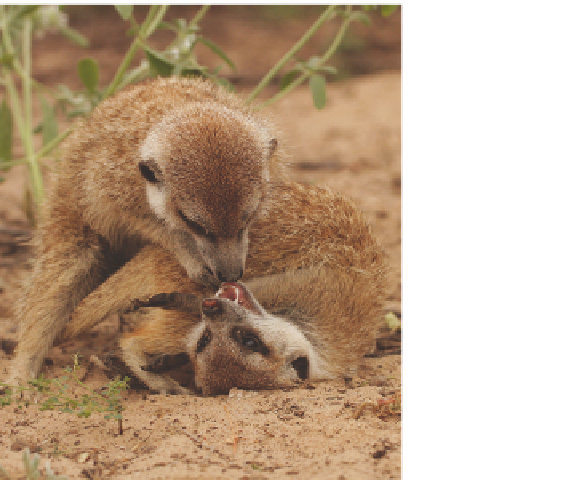Biology Reference
In-Depth Information
CHAPTER 12
Cooperation
Photo © Andrew Young
In the last chapter we explained how altruistic cooperation could be favoured between
related individuals by kin selection. However, cooperation can also happen
between non-relatives. For example, in many cooperative breeding vertebrates, such as
meerkats, dwarf mongooses and superb fairy wrens, some helpers are unrelated to the
offspring that they are helping to rear. An even more extreme example is provided by
mutualistic cooperation between species, such as when cleaner fish remove parasites
from their clients, or when rhizobia bacteria fix nitrogen from the atmosphere and
provide it to their legume plant hosts. Consequently, it is clear that cooperation is not
just about kin selection.
In this chapter we distinguish four different hypotheses for the evolution of cooperative
behaviours. This first of these is kin selection, which can explain altruistic cooperation
between relatives. The other three hypotheses all rely on cooperation providing some
direct benefit to the cooperator: by-product benefits, reciprocity and enforcement. In
these cases, cooperation ends up not being altruistic, and is instead mutually beneficial
(Table B11.1.1). We shall see that the ways in which cooperation can provide a direct
benefit can be complex, involving delayed benefits that only accrue in the long term or
active enforcement mechanisms.
What is cooperation?
A behaviour is cooperative if it provides a benefit to another individual (recipient) and
has been selected for (at least partially) because of its beneficial effect on the recipient.
The latter clause is added to exclude behaviours which merely provide a one-way
by-product to others (West
et al
., 2007a). For example, when an elephant produces
dung, this is beneficial to a dung beetle that comes along and uses that dung but it is not





























